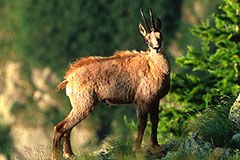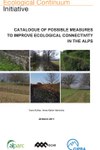News
What counts for the diversity of Alpine species
Mar 12, 2013
/
alpMedia
An international team of researchers has decided on the 50 most important questions for the connecting of habitats in the Alpine regions. Research, support and projects should thus now all be singing in unison. What really counts for the Alpine space?

Image caption:
All animal species, including the chamois, have to be able to move freely in the Alpine regions in order to survive. © Guillaume Laget
How does the return of bears, wolves and lynx effect the ecosystems in the Alpine ecological network? How will demographic change affect the future of the ecological continuum? And which indicators of species and habitats can be used to assess an ecological network? These are just three of the 50 questions put together by scientists, politicians and environmentalists from all the Alpine lands. This list should in future make it easier to set priorities for the protection and re-establishment of the connectivity of habitats in the Alps. In addition, it is a wish list for researchers and sponsors to address these questions, some of them pressing and very difficult to answer.
The Alps are home to some 43,000 plant and animal species. For them to eat, rest and reproduce the animals have to be able to migrate. That is only possible if habitats are linked to one another. The Ecological Continuum Initiative, the Ecological Network platform and the project partners of Econnect are working towards this aim; they also initiated the drawing up of the 50 questions.
Source and further information: www.vetmeduni.ac.at/en/infoservice, www.alpine-ecological-network.org/, www.plosone.org/article/info%3Adoi%2F10
The Alps are home to some 43,000 plant and animal species. For them to eat, rest and reproduce the animals have to be able to migrate. That is only possible if habitats are linked to one another. The Ecological Continuum Initiative, the Ecological Network platform and the project partners of Econnect are working towards this aim; they also initiated the drawing up of the 50 questions.
Source and further information: www.vetmeduni.ac.at/en/infoservice, www.alpine-ecological-network.org/, www.plosone.org/article/info%3Adoi%2F10



